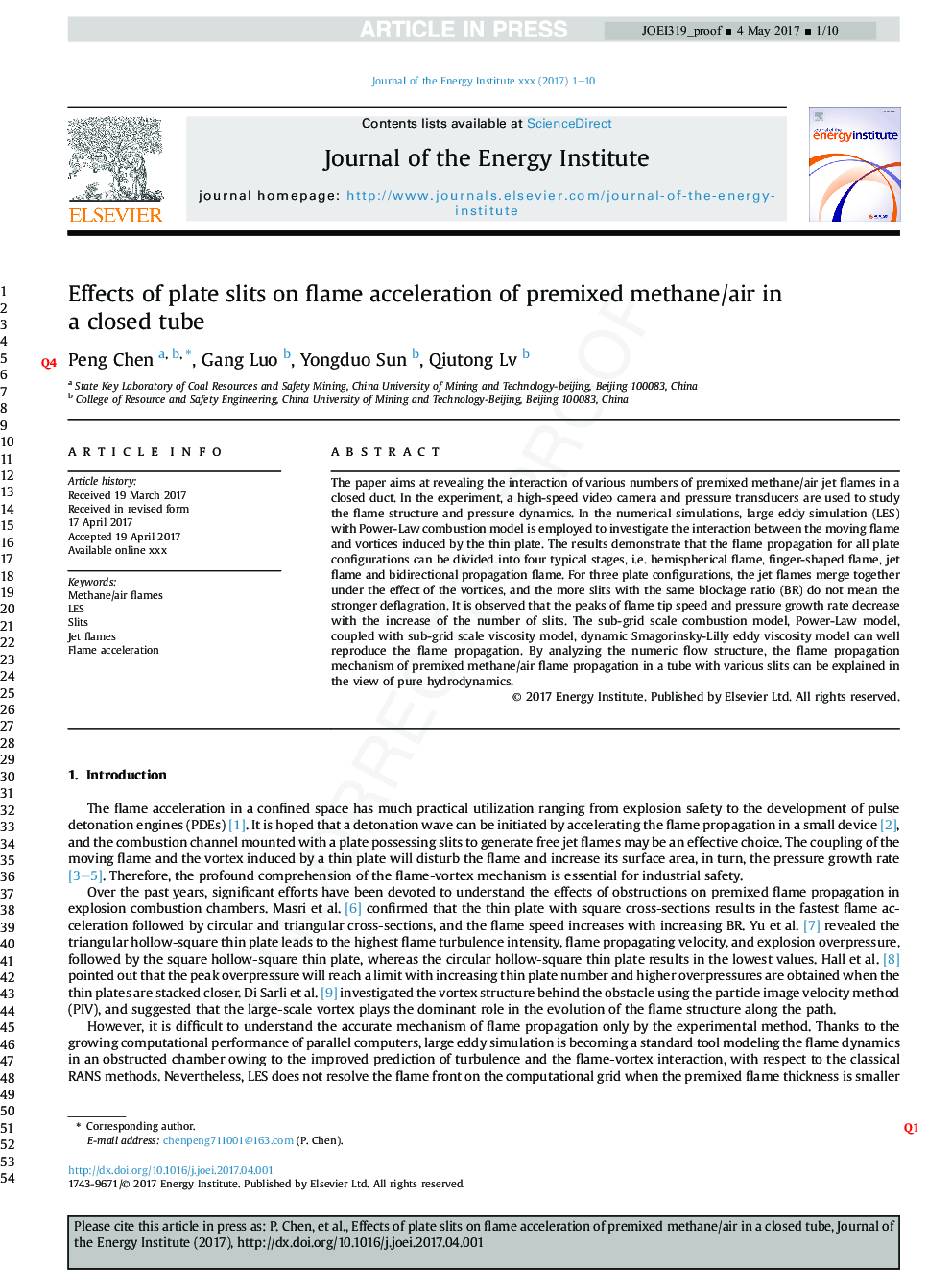| Article ID | Journal | Published Year | Pages | File Type |
|---|---|---|---|---|
| 8108526 | Journal of the Energy Institute | 2018 | 10 Pages |
Abstract
The paper aims at revealing the interaction of various numbers of premixed methane/air jet flames in a closed duct. In the experiment, a high-speed video camera and pressure transducers are used to study the flame structure and pressure dynamics. In the numerical simulations, large eddy simulation (LES) with Power-Law combustion model is employed to investigate the interaction between the moving flame and vortices induced by the thin plate. The results demonstrate that the flame propagation for all plate configurations can be divided into four typical stages, i.e. hemispherical flame, finger-shaped flame, jet flame and bidirectional propagation flame. For three plate configurations, the jet flames merge together under the effect of the vortices, and the more slits with the same blockage ratio (BR) do not mean the stronger deflagration. It is observed that the peaks of flame tip speed and pressure growth rate decrease with the increase of the number of slits. The sub-grid scale combustion model, Power-Law model, coupled with sub-grid scale viscosity model, dynamic Smagorinsky-Lilly eddy viscosity model can well reproduce the flame propagation. By analyzing the numeric flow structure, the flame propagation mechanism of premixed methane/air flame propagation in a tube with various slits can be explained in the view of pure hydrodynamics.
Keywords
Related Topics
Physical Sciences and Engineering
Energy
Energy Engineering and Power Technology
Authors
Peng Chen, Gang Luo, Yongduo Sun, Qiutong Lv,
